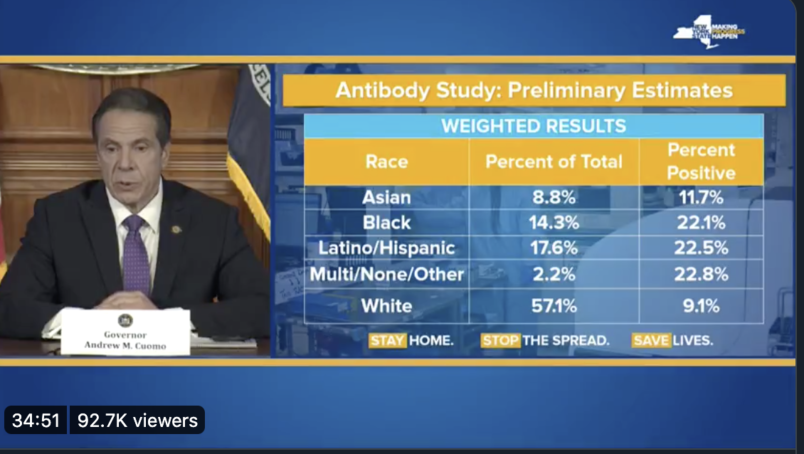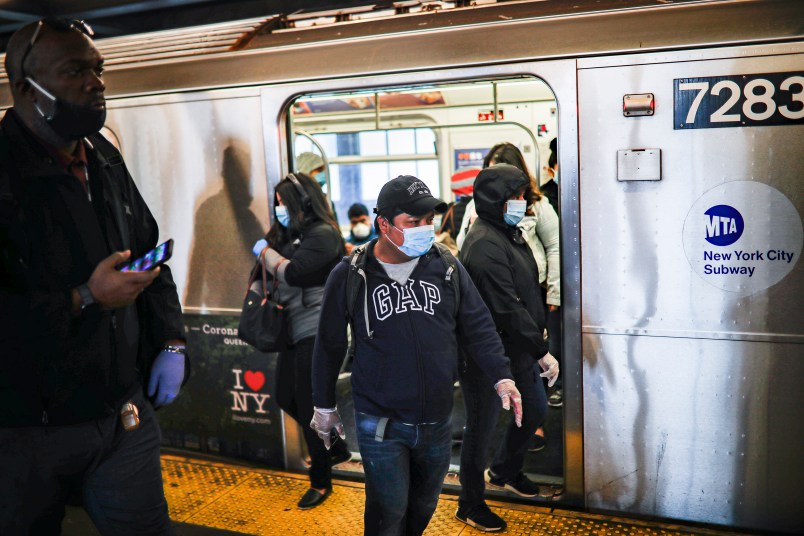Gov. Cuomo released some very important data today from New York State’s first COVID19 serology (antibodies) testing. They’re preliminary. So keep that in mind as more than just fine print. (Details on that in a moment.) The key data: 21.2% of New York City residents tested positive for COVID19 antibodies. 16.7% for Long Island; 11.7% for Rockland and Westchester (the suburbs just to the north of the city); and 3.6% in the rest of the state.
According to Gov. Cuomo they’ve conducted about 3,000 tests. They’ve conducted them outside grocery and big box stores. They didn’t test anyone under 18. So these are people who are maybe not totally locking down. They’re going out to groceries and other stores with essential goods. But they are likely also not essential workers. They’re going to the grocery store in the middle of the day. Elderly people aren’t supposed to be going out at all. So they’re likely underrepresented. Finally, it takes a while to develop antibodies. And Cuomo didn’t say specifically on which dates the tests were conducted.

Still this gives us some early grounding for a critical question: how widespread is COVID19 in the population? 21.2% for New York City is a lot. Applying that to the city population gives you 1.78 million infections. What Cuomo referred to as a “weighted result” for the state as a whole was 13.9%. That’s 2.7 million infections for the whole state.
I didn’t see any mention of what test was being used or any data on its accuracy.
Here’s a breakdown by race. Cuomo noted, I think correctly, that a significant amount of the disparity by race is a permutation of the state’s minority population being heavily concentrated in New York City.

Just to revisit that question about fatality rates we discussed yesterday, if that percentage were accurate and we applied it to the total tested and presumed COVID19 fatalities in New York City that would produce an infection mortality rate of .76%. I stress again these are all preliminary numbers. So we can’t treat that as a hard number. It does give us a ballpark, however, that is at least based on measures grounded in real science.






